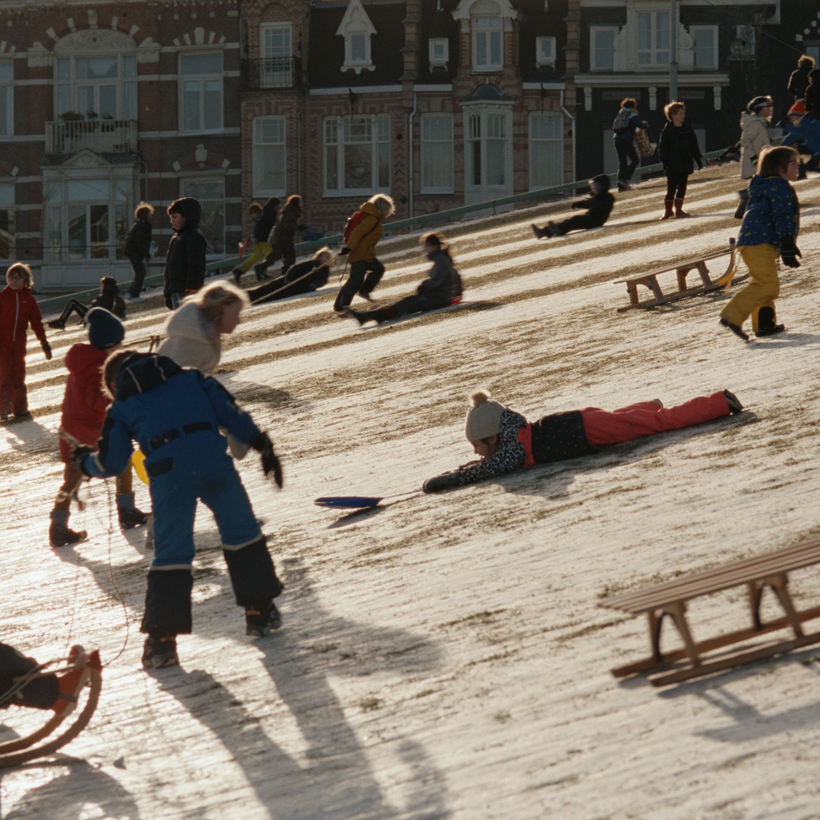Occupied City opens inside an ordinary Amsterdam house. A woman putters about, clambering down into a cellar to fetch something. But the voice-over speaks of a nightmarish history. At the same address, Jews faced the citywide Nazi occupation during World War II. With his latest, an encyclopedic documentary, the Oscar-winning filmmaker Steve McQueen makes sure that their history doesn’t go silent.
A kind of panoramic close-up, Occupied City surveys the Amsterdam where Jewish residents once lived, where Nazi officers stayed, where Resistance fighters holed up, and where some were protected and many others betrayed. The four-hour-plus work—which opens on December 25—has Shoah-size ambition. But instead of featuring interviews, McQueen’s camera bears witness by viewing today’s Amsterdam under a calm, detailed voice-over about the past.

“In Amsterdam, the first thing I experienced was that there were two narratives going on—the present and the past. It’s almost like I was living with ghosts,” McQueen says of the city’s bustling 17th-century palimpsest of canals.
The London-born filmmaker lives there with his partner, Bianca Stigter, a historian and the director of Three Minutes: A Lengthening (2021), which examined footage of Polish Jews before the Holocaust. Stigter’s document-driven 2019 book, Atlas of an Occupied City (Amsterdam 1940–1945), informs McQueen’s film. Occupied City is a typically innovative project from the director of 12 Years a Slave, which was an unflinching Oscar winner for best picture, and of the stringent Michael Fassbender I.R.A. drama, Hunger.
“In Amsterdam, the first thing I experienced was that there were two narratives going on—the present and the past. It’s almost like I was living with ghosts.”
Once again, McQueen doesn’t look away from the depths of suffering. “I started with the deepest, darkest possible thing I could think of, which was people who took their lives and their children’s lives because they thought there was no place for them in the future,” he says.
There are also vivid stories of daily survival, including passages from a kind of manual for those living clandestinely with host families. Occupied City covers around 130 addresses in total, winnowed from 2,000 in Stigter’s text. Stigter’s parents lived through wartime famine; her father found fame as a poet.
“A question of my dad was one of the starting points for writing the book: ‘Where did Germans go when they occupied Amsterdam?’ And of course it was all pre-planned,” Stigter says. She sought to “preserve things that are easily forgotten,” like “where roundups took place, where Resistance groups staged attacks.”
And so the city of Anne Frank is shown to contain a wrenching story at every other address. At one point in our interview, Stigter reviews the schools their children have attended: one was used as a prison, another as a roundup site, and so on. The film itself had its Dutch premiere at the beautifully ornate Tuschinski Theatre, whose founder, Abraham Tuschinski, was murdered in Auschwitz.

The film’s modern-day images look mundane, though there’s also the chaos of early pandemic lockdowns and protests. (Since the film’s premiere, in Cannes, politics has turned especially grim as the far right won in Dutch national elections.)
But McQueen and Stigter balked at setting parallels between the 21st-century footage and the historical voice-over. “I think what people are always trying to do is make sense of it all,” McQueen says. “But how can you make sense of over six million people being killed for being Jewish?”
Occupied City effectively contains multitudes of memorials. But Stigter remains haunted by who wasn’t there. “The most harrowing thing,” she says, “was when I could not find any information about someone.”
Occupied City will hit theaters on December 25
Nicolas Rapold is a New York–based writer and the former editor of Film Comment magazine

